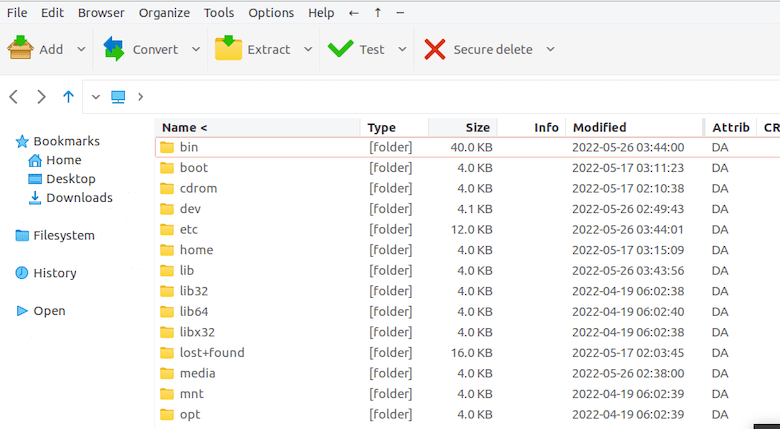How To Install PeaZip on AlmaLinux 9

In the world of Linux file management, PeaZip stands out as a versatile and powerful compression tool. For users of AlmaLinux 9, a robust enterprise-grade Linux distribution, integrating PeaZip can significantly enhance file handling capabilities. This guide will walk you through the process of installing PeaZip on AlmaLinux 9, ensuring you can leverage its features to streamline your file compression and archiving tasks.
Understanding PeaZip and AlmaLinux 9
Before diving into the installation process, it’s crucial to understand what PeaZip is and why it’s beneficial for AlmaLinux 9 users. PeaZip is an open-source file archiver and compression tool that supports a wide array of formats, including ZIP, 7Z, RAR, and many others. It offers a user-friendly interface coupled with advanced features like strong encryption and file splitting.
AlmaLinux 9, on the other hand, is a community-driven, enterprise-grade Linux distribution that aims to provide a stable and secure operating system for servers and workstations. As a binary-compatible alternative to Red Hat Enterprise Linux (RHEL), AlmaLinux 9 offers a solid foundation for various applications, including file compression tools like PeaZip.
The compatibility between PeaZip and AlmaLinux 9 is excellent, making it a valuable addition to your system’s toolkit. Whether you’re managing large datasets, backing up important files, or simply need to reduce file sizes for easier sharing, PeaZip on AlmaLinux 9 provides a robust solution.
Prerequisites for Installing PeaZip
Before proceeding with the installation, ensure your AlmaLinux 9 system meets the following requirements:
- A 64-bit system architecture (x86_64)
- At least 100 MB of free disk space
- Root or sudo privileges for installation
- An active internet connection for downloading packages
To prepare your system, it’s recommended to update your existing packages:
sudo dnf update -yThis ensures your system has the latest security patches and package versions, reducing the likelihood of compatibility issues during the PeaZip installation.
Methods to Install PeaZip on AlmaLinux 9
There are several methods to install PeaZip on AlmaLinux 9. We’ll cover three primary approaches: using the RPM package, Flatpak, and compiling from source code. Each method has its advantages, and you can choose the one that best suits your needs and comfort level.
1. Installing PeaZip using RPM package
The RPM (Red Hat Package Manager) method is straightforward and integrates well with AlmaLinux’s package management system.
- First, download the latest RPM package from the official PeaZip website:
wget https://github.com/peazip/PeaZip/releases/download/10.0.0/peazip-10.0.0.LINUX.GTK2-1.x86_64.rpm - Once downloaded, install the package using dnf:
sudo dnf install ./peazip-10.0.0.LINUX.GTK2-1.x86_64.rpm - Verify the installation by checking the version:
peazip --version
If the installation is successful, you should see the PeaZip version information displayed in the terminal.
2. Installing PeaZip using Flatpak
Flatpak is a universal package management system that allows for easy installation and updates of applications across different Linux distributions.
- First, set up Flatpak on AlmaLinux 9:
sudo dnf install flatpak -y - Add the Flathub repository:
flatpak remote-add --if-not-exists flathub https://flathub.org/repo/flathub.flatpakrepo - Install PeaZip via Flatpak:
flatpak install flathub io.github.peazip.PeaZip - To run PeaZip installed via Flatpak:
flatpak run io.github.peazip.PeaZip
The Flatpak method ensures you always have the latest version of PeaZip and provides a sandboxed environment for the application.
3. Installing PeaZip from source code
For users who prefer more control or need to customize the installation, compiling from source is an option.
- Download the source code:
wget https://github.com/peazip/PeaZip/releases/download/10.0.0/peazip_portable-10.0.0.LINUX.GTK2.x86_64.tar.gz - Extract the archive:
tar -xzvf peazip_portable-10.0.0.LINUX.GTK2.x86_64.tar.gz - Navigate to the extracted directory:
cd peazip_portable-10.0.0.LINUX.GTK2.x86_64 - Compile and install:
make sudo make install
While this method provides the most flexibility, it requires more technical knowledge and may not integrate as seamlessly with the system’s package management.
Post-Installation Configuration
After installing PeaZip, you’ll want to configure it for optimal use on AlmaLinux 9:
- Set up file associations:
- Open PeaZip and go to Options > Settings
- Navigate to the “Integration” tab
- Select the file types you want PeaZip to handle
- Customize PeaZip preferences:
- Adjust compression levels
- Set default archive format
- Configure encryption settings
- Integrate PeaZip with the AlmaLinux 9 desktop environment:
- Right-click on a file or folder
- Select “Open with” and choose PeaZip
- Set PeaZip as the default application for archive files

Using PeaZip on AlmaLinux 9
Now that PeaZip is installed and configured, let’s explore its basic and advanced features:
Basic Operations
- To compress files:
- Select the files/folders you want to compress
- Right-click and choose “Add to archive”
- Select your desired compression format and settings
- Click “OK” to create the archive
- To extract files:
- Right-click on the archive
- Select “Extract here” or choose a specific location
Advanced Features
- Encryption:
- When creating an archive, select the “Encrypt” option
- Choose your encryption method (AES is recommended)
- Set a strong password
- Splitting files:
- Select “Split file” from the PeaZip menu
- Choose the file to split and set the desired chunk size
- Click “OK” to start the splitting process
For optimal usage on AlmaLinux 9, consider using PeaZip’s command-line interface for batch operations or scripting tasks. This can be particularly useful for server environments or automated workflows.
Troubleshooting Common Issues
While PeaZip generally works smoothly on AlmaLinux 9, you might encounter some issues:
- Dependency problems: If you’re missing dependencies, use the following command to resolve them:
sudo dnf install --allowerasing peazip - Permission errors: Ensure you have the necessary permissions to read/write in the directories you’re working with. Use sudo when necessary, but be cautious with system files.
- Integration issues: If PeaZip doesn’t integrate well with your desktop environment, try reinstalling or using the Flatpak version, which often provides better integration across different setups.
Updating and Maintaining PeaZip
Keeping PeaZip updated ensures you have the latest features and security patches:
- For RPM installations:
sudo dnf update peazip - For Flatpak installations:
flatpak update io.github.peazip.PeaZip - For source installations, you’ll need to download the latest source and recompile.
Regularly check for updates and perform system maintenance to ensure PeaZip continues to function optimally on your AlmaLinux 9 system.
Alternatives to PeaZip for AlmaLinux 9
While PeaZip is an excellent choice for file compression and archiving on AlmaLinux 9, it’s worth considering alternatives:
- 7-Zip: A powerful command-line tool with excellent compression ratios
- File Roller: GNOME’s default archive manager, which integrates well with the GNOME desktop environment
- Ark: KDE’s archive utility, ideal for users of the KDE Plasma desktop
These alternatives might be preferable if you need specific features or better integration with your chosen desktop environment. However, PeaZip’s combination of a user-friendly interface and advanced features makes it a top choice for many AlmaLinux 9 users.
Congratulations! You have successfully installed PeaZip. Thanks for using this tutorial for installing the PeaZip file archiver utility on AlmaLinux 9 system. For additional help or useful information, we recommend you check the official PeaZip website.